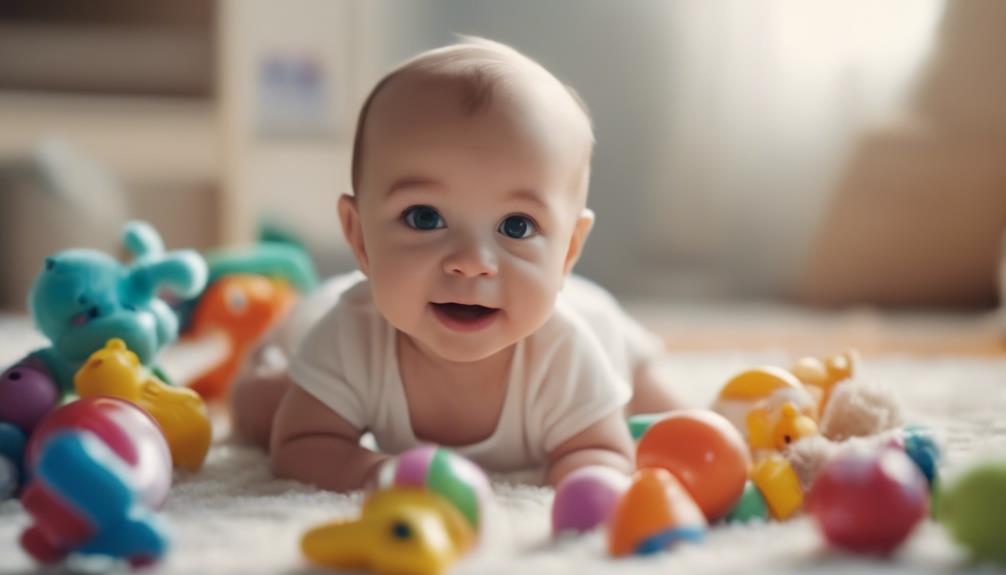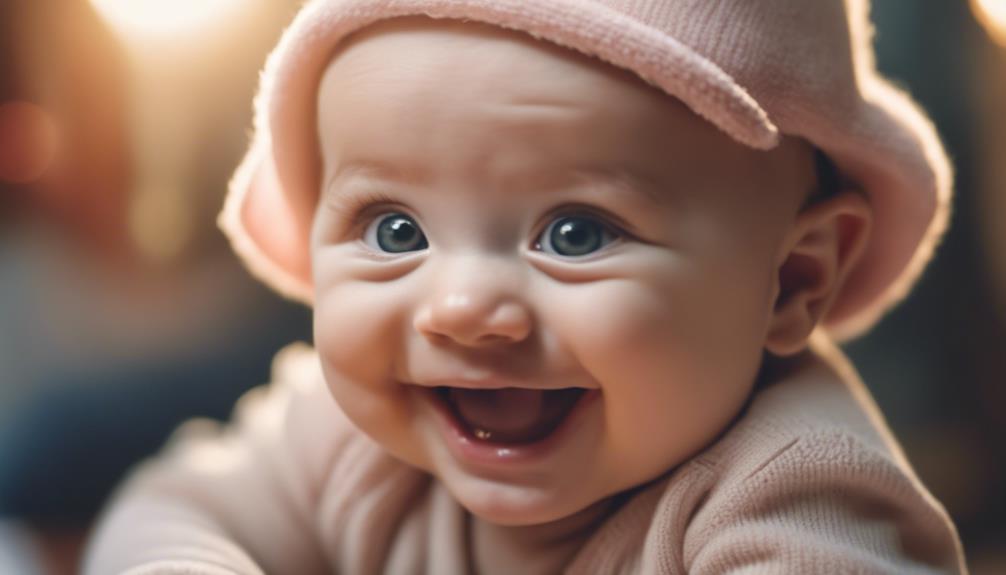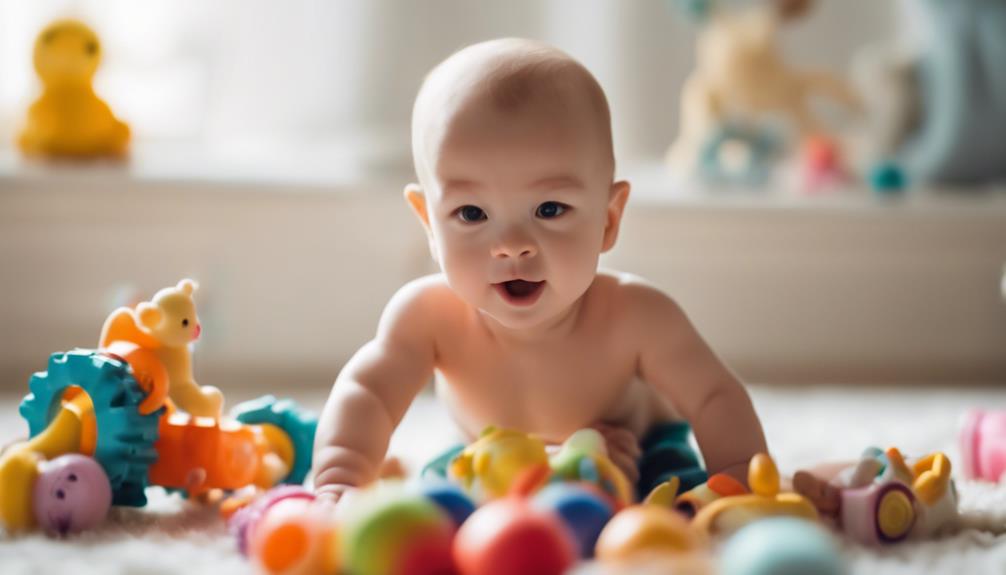When your baby is always smiling, it demonstrates their positive emotional state, cognitive development, and bond with you. Brain development, emotional well-being, and bonding all play a role in your baby’s constant smiles. As babies start laughing around 3 months old, they begin to understand and express happiness through facial expressions. Consistent routines, engaging playtime, and interactive activities contribute to their joy. Smiling fosters secure attachments and emotional connections, enhancing your relationship. By nurturing your baby’s happiness through play and encouraging smiles, you support their overall well-being. Understanding the complexities behind your baby’s smiles reveals a world of happiness and development awaiting you.
Key Takeaways
- Smiling indicates emotional well-being and security in babies.
- Babies connect and bond through expressions like smiling.
- Encouraging baby smiles strengthens emotional connections.
- Baby smiles promote social development and positive relationships.
- Understanding baby happiness involves recognizing the significance of smiling.
The Science Behind Baby Smiles
How do babies develop their ability to smile and laugh? It all comes down to brain development and facial expressions. Research indicates that babies start laughing around 3 months old, often triggered by their parents' actions.
As they grow, babies become more adept at using their faces, bodies, and voices to elicit laughter from adults, showcasing their humor development. By 7-8 months, babies can already display creativity in making others laugh.
Humor development in children progresses from simple giggles at 3-4 months to laughing at language mistakes by the end of the second year. Babies find surprises funny due to their playful nature and contextual understanding. This early engagement in humor is vital for developing relationships, confidence, and imagination in babies.
Understanding the science behind baby smiles sheds light on the intricate processes that contribute to the development of a child's sense of humor and emotional expression.
Factors Affecting Baby Happiness
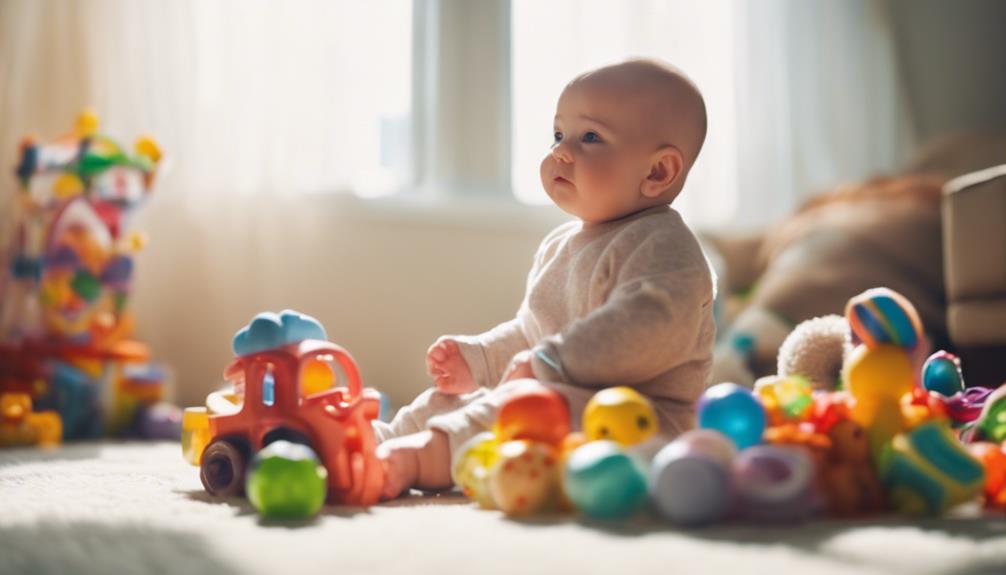
Factors that influence a baby's happiness encompass everyday routines, engaging playtime rituals, and the quality of their sleep environment.
To guarantee your young baby is continuously joyful, consider the following:
- Consistent Routines: Establishing predictable daily routines can create a sense of security and stability for your baby, leading to heightened happiness levels.
- Engaging Playtime: Playtime rituals that involve interactive and stimulating activities can enhance your baby's mood and overall happiness, as they love exploring the world around them through play.
- Sleep Environment: Providing a comfortable and soothing sleep environment can notably impact your baby's happiness, promoting better rest and a more cheerful disposition.
Baby Smiles and Emotional Development

Baby smiles play an essential role in their emotional development and social interactions. When babies smile, it's not just a reflex; it's a way for them to communicate positive emotions and engage with the world around them. Research has shown that even very young infants, only a few weeks old, can distinguish between different types of smiles, indicating the significance of this early form of expression.
Smiling also helps babies bond with their caregivers, fostering secure attachments that are vital for emotional development. According to child development expert Dr. Johnson, 'Smiling is a key way for babies to connect with their caregivers and feel safe and loved.'
Whether it's a reflexive smile in response to a physical sensation or an intentional smile directed at a familiar face, babies' smiles provide insights into their internal state and responses to stimuli. By encouraging smiles through positive interactions and responsive caregiving, parents can support their babies' emotional well-being and nurture strong social connections from the very beginning.
Nurturing Baby's Joy Through Play
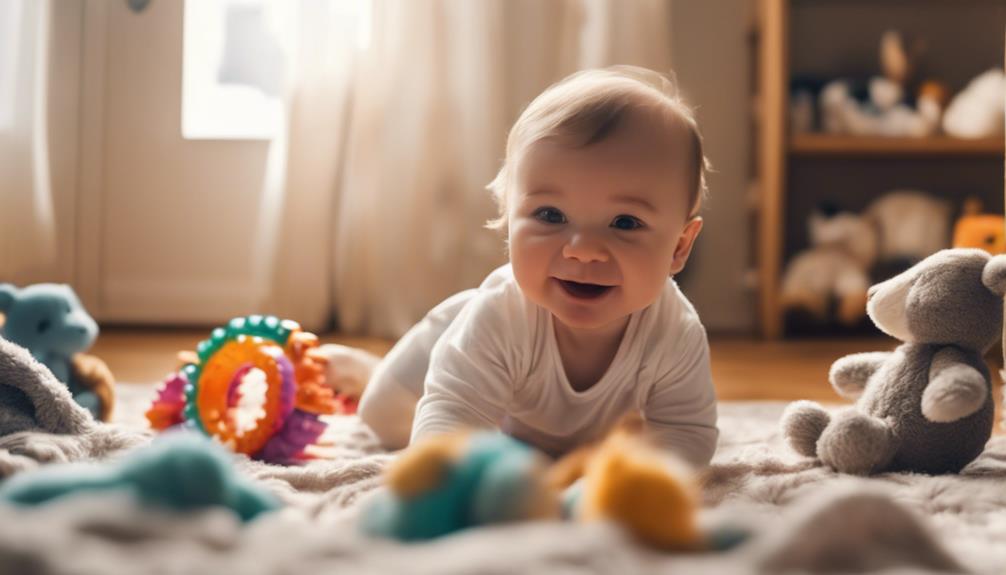
Engaging in playtime rituals with your baby contributes greatly to their consistent joy and overall happiness. Playtime activities play an important role in stimulating your baby's curiosity, fostering a sense of wonder and delight that enhances their emotional well-being.
Creating a happy environment during playtime can greatly impact your baby's mood, promoting feelings of joy and contentment.
To nurture your baby's joy through play, consider the following:
- Stimulating Cognitive and Motor Skills: Playtime interactions provide valuable opportunities for your baby to develop essential cognitive and motor skills. Through engaging in play, babies can enhance their problem-solving abilities and physical coordination.
- Building Emotional Bonds: Playtime activities not only entertain your baby but also strengthen the emotional bonds between you and your little one. These interactions create moments of joy and connection that are crucial for your baby's emotional development.
- Promoting Overall Happiness: By engaging in joyful playtime activities, you contribute to your baby's overall happiness and well-being. These moments of play and laughter create a positive environment that nurtures your baby's joy.
Enhancing Parent-Baby Bond Through Smiles

Enhancing the parent-baby bond through smiles involves fostering positive interactions and emotional connections between caregivers and infants. Smiling is an essential form of communication for babies, indicating joy and a sense of security in the presence of their parents. Research suggests that babies as young as a few weeks old can start smiling in response to stimuli like voices and faces, showcasing their innate ability to connect through expressions.
By encouraging baby smiles through engaging playtime, soothing interactions, and a cheerful environment, parents can strengthen the parent-baby bond markedly.
According to child development expert Dr. Smith, 'Smiling is a powerful tool for strengthening the emotional connection between parents and infants.' Responding to baby smiles with warmth, attention, and gentle interactions not only reinforces the bond but also promotes further social development in babies.
Incorporating smiling as a key element in parent-baby interactions can lead to a happier and more connected relationship between caregivers and their little ones.
Frequently Asked Questions
Why Is My Baby so Smiley All the Time?
You wonder, why is your baby so smiley all the time? Babies naturally express joy through smiles. Positive interactions and a nurturing environment foster happiness. Your baby's constant smiles show contentment, communication, and a cheerful disposition.
Do Babies Understand Happiness?
Babies understand happiness through positive social interactions and emotional cues from caregivers. Their ability to distinguish between emotions develops early, influencing their sense of joy. Smiling and laughter are crucial expressions of a baby's happiness.
Why Is My Baby Smiling Without Reason?
When your baby smiles without reason, it's like a sunbeam dancing on a quiet pond – pure joy. Their natural reflexes, contentment, and positive emotions often spark those delightful grins. Enjoy these magical moments!
What Are the Signs of a Happy Baby?
When your baby is happy, they smile frequently, playfully interact, make eye contact, respond positively to stimuli, and show curiosity in their surroundings. A content baby exudes calmness, maintains regular sleep patterns, and enjoys feeding.
Conclusion
In summary, understanding the science behind baby smiles can provide valuable insights into their emotional development. Factors such as genetics, environment, and parent-infant interactions play a vital role in shaping a baby's happiness.
Nurturing joy through play and bonding with your baby through smiles can have a lasting impact on their overall well-being. As one source aptly puts it, 'A baby's smile is a significant indicator of their contentment and connection with their caregivers.'

